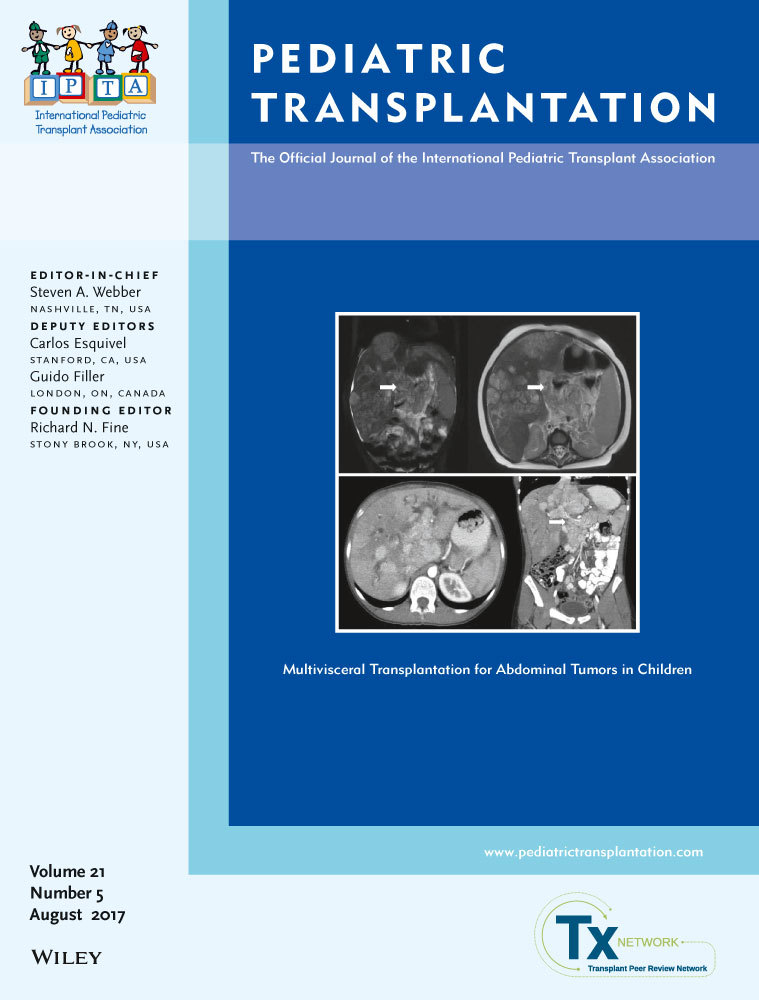Intrahepatic cholangiojejunostomy for complex biliary stenosis after pediatric living-donor liver transplantation
Abstract
The treatment of biliary stenosis after pediatric LDLT is challenging. We describe an innovative technique of peripheral IHCJ for the treatment of patients with complex biliary stenosis after pediatric LDLT in whom percutaneous treatment failed. During surgery, the percutaneous biliary drainage is removed and a flexible metal stylet is introduced trough the tract. Subsequently, the most superficial aspect of the biliary tree is recognized by palpation of the stylet's round tip in the liver surface. The liver parenchyma is then transected until the bile duct is reached. A side-to-side anastomosis to the previous Roux-en-Y limb is performed over a silicone stent. Among 328 pediatric liver transplants performed between 1988 and 2015, 26 patients developed biliary stenosis. From nine patients requiring surgery, three patients who had received left lateral grafts from living-related donors due to biliary atresia were successfully treated with IHCJ. After a mean of 45.6 months, all patients are alive with normal liver morphological and function tests. The presented technique was a feasible and safe surgical option to treat selected pediatric recipients with complex biliary stenosis in whom percutaneous procedures or rehepaticojejunostomy were not possible, allowing complete resolution of cholestasis and thus avoiding liver retransplantation.




